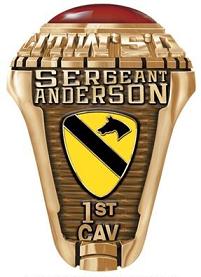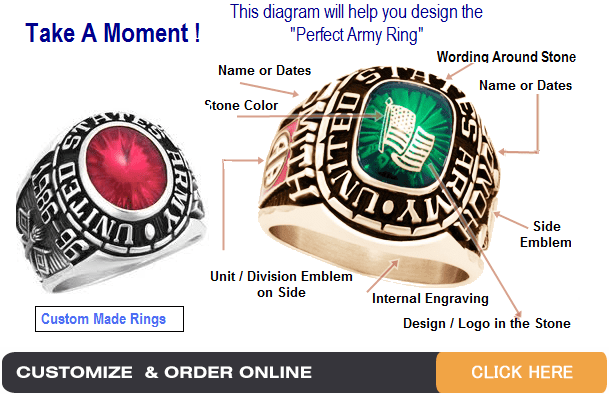The 1st Cavalry Division has earned its nickname as America’s First Team by being the first military unit to accomplish many great things. They were the first unit into Tokyo, and also North Korea. The first in Vietnam and Cambodia, and the first heavy armoured division in Iraq. The Division’s motto is “Live the Legend,”. When a 1st Cavalry Trooper is on parade, they proudly recall the name of the old Irish marching tune that has become synonymous with the cavalry, “Garry Owen!”
The 1st Cavalry Division is one of the first units to apply helicopters to combat. Our First Team was a unit of the United States Army that fought in the Vietnam War. It is a heavy-armoured division assigned to the U.S. Army’s III Corps. Also the largest division in the United States Army with nearly 17,000 soldiers assigned. Their home base is Fort Hood, Texas but 1st Cavalry Division troopers have fought around the world pursuing the Division’s motto of “Live the Legend.”
The 1st Cavalry Regiment can trace its lineage to the First Regiment of Dragoons which existed as early as 1833. The 1st, 7th, 8th, and 10th Cavalry Regiments, who would form the future “First Team”. They participated in major battles of the Civil War, the Indian Wars, the Spanish American War, and the Punitive Expedition to Mexico.
1st Cavalry Division Texas
World War I proved that armoured vehicles and aircraft would be the weapons of the future. But when the First Team was activated in 1921, these machines were still not reliable enough for the harsh conditions encountered patrolling the Mexican border. When the Division first assembled for manoeuvres at Camp Marfa, Texas in the fall of 1923, the troopers still rode horses. The First Cavalry Division added its first aerial assets in October of 1928. This was with the assignment of the 1st Observation Squadron, Air Force. The next month began the arrival of armoured vehicles with the 1st Armored Car Squadron.
The 1st Cavalry Division continued throughout the 1930s to patrol the border, field new equipment, improve their home base at Fort Bliss, near El Paso, Texas, and prepare for the war to come.
 Although the First Team was born out of the need for large horse-cavalry formations. By 1940 many officers of the Army thought the horse was outdated. The reason the Army continued to maintain a unit of horse cavalry was the concern for the defense of the Southwest United States.
Although the First Team was born out of the need for large horse-cavalry formations. By 1940 many officers of the Army thought the horse was outdated. The reason the Army continued to maintain a unit of horse cavalry was the concern for the defense of the Southwest United States.
The less-than-ideal terrain of the Southwest during these years included rocky hills, deserts, and a lack of good road networks. Mounted cavalry would be ideal to defend this terrain since horses could move through it faster than wheeled vehicles.
World War II
Also, cavalry in the 20th Century usually fought dismounted and the 1st Cavalry Division would be supported by their own artillery and armour. When the Japanese attacked Pearl Harbor on December 7, 1941 and the United States was thrown into World War II, the first wartime mission of the 1st Cavalry Division was to continue surveillance of the Mexican border.
In May of 1942, over twelve hundred troopers from the First Team were assigned as cadres for the organization of the 91st Infantry Division at Camp White, Oregon. By the end of 1942, the 1st Armored Car Squadron, the 62nd Armored Field Artillery, and the 161st Engineers had left the Division for the European Theater. The remainder of the Division continued to train with their mix of machines and horses.
By 1943 the threat to our southern border had diminished and the 1st Cavalry Division was alerted for an overseas assignment in February. The cavalrymen, however reluctantly, turned in their horses and saddles. By July the bulk of the Division was on troop ships bound for Australia and the Pacific. The remainder of 1943 was used for training and organizational training in Australia.

The Native American 1st Cavalry History
The Native American “Code Talkers” is a side note of the 1st Cavalry Division military history. Like the more famous Navajo Code Talkers who served with the Marine Corps, the radio platoon of the 302nd Reconnaissance Troop recruited, at the direction of General MacArthur, Lakota and Dakota Indians who used their Sioux language to communicate with other Divisional Headquarters troops. The Japanese never broke this “code.” In January of 1944, the First Team moved out to the stage in New Guinea for their first combat action.
On February 27, 1944, the Division sailed from New Guinea to “island hop” through the Japanese-held island chain of the Admiralties. The first landing occurred on the morning of February 29th on the island of Los Negros. On March 15th the First Team landed on Manus Island. By May 18th the Admiralty Islands campaign was officially over. The 1st Cavalry Division had killed over 3,300 Japanese soldiers while suffering only 290 killed in action, 977 wounded, and 4 troopers missing in action.
As part of MacArthur’s return to the Philippines, the 1st Cavalry Division landed on Leyte Island on October 20, 1944. The Leyte Campaign wrapped up at the end of December and on January 26, 1945, the First Team was on board convoys headed for Luzon to continue the recapture of the Philippines. On February 3rd elements of the 1st Cavalry won the race to the Philippine capital of Manila.
Manila
There they had the honor of capturing the capital building before retreating Japanese troops could burn it and rescuing almost 4,000 civilian prisoners at an internment camp at Santo Tomas University. The fight for Manila was hard and the 37th Infantry Division joined the First Team on February 5th to take on the Japanese holding the western side of the city.
At that time, Manila was a city of 800,000 residents and one of the largest in Southeast Asia. It took until March 3, 1945, to end organized enemy resistance in Manila. By June 30th the fighting on Luzon was declared completed and the Division began training for its part in the invasion of the Japanese mainland. The invasion, dubbed Operation Olympic was set for November 1, 1945. However, the dropping of the atomic bombs on Hiroshima and Nagasaki and the subsequent surrender of Japan ended that surely costly mission. On September 5, 1945, elements of the 1st Cavalry Division moved into Tokyo, the first official movement of troops into the Japanese capital.
On the morning of June 25, 1950, North Korea invaded the Republic of Korea to the south. The United States, determined to support their South Korean allies, immediately sent troops from the 24th Infantry Division. To bolster the low-strength units of the peacetime army, the 24th deployed with many members of the 1st Cavalry Division. Also, A Company, the 71st Heavy Tank Battalion, which was previously part of the First Team, deployed to Korea attached to the 24th Infantry Division. The remainder of the 1st Cavalry Division landed at Pohangdong, Korea on July 18th to join American and South Korean forces in holding the “Pusan Perimeter.” On September 15th General MacArthur launched the famous Inchon Landing in Korea.
North Korea
The 1st Cavalry Division broke out of the Pusan Perimeter and started fighting north to join the United Nations forces coming inland from Inchon. During this offensive, Task Force Lynch comprised of units from the 1st Cavalry Division led the Pusan Perimeter Breakout covering over 106 miles through enemy territory to link up with the 7th Infantry Division coming from Inchon. On October 9th the First Team crossed the 38th Parallel into North Korea and on October 17th was the first unit into the North Korean capital of Pyongyang.
Occupation duty ended on August 29, 1957, when, in accordance with a treaty signed by both Japan and the United States, defense of the Japanese mainland was turned over to the Japanese Defense Forces and all U.S. ground forces were removed. The 1st Cavalry Division was ordered to move its colors once again to Korea.
The Division continued to serve overseas as part of the U.S. commitment to defend South Korea. During this period the First Team went through reorganizations and fielded new equipment, all while patrolling the Demilitarized Zone (DMZ) that separated North and South Korea.
Fort Benning
The Division also began to field helicopters in the spring of 1963 and train in airmobile tactics. In July of 1965, the First Team was reorganized as the 1st Cavalry Division (Airmobile) and officially activated at Fort Benning, Georgia out of personnel from the 11th Air Assault Division (Test). Their duties in Korea were turned over to the 2nd Infantry Division, and one month later the First Team was en route to Vietnam. In August of 1965, an advance party of the First Team flew into Nha Trang, Vietnam. The combat force of the 1st Cavalry Division (Airmobile) arrived by Military Sea Transport by mid-September. By September 19th, elements of the First Team were already engaging the enemy in Operation Gibraltar with the 101st Airborne.
Mel Gibson
The 1st Cavalry Division’s first major operation was the Pleiku Campaign, in which the Division conducted 35 days of continuous airmobile operations. The opening battle of the campaign was the Battle of the Ia Drang Valley which took place between November 14 and November 18, 1965 It involved the 1st and 2nd Battalions of the 7th Cavalry with the 1st Battalion of the 5th Cavalry going against more than three North Vietnamese Regiments and a Viet Cong Battalion. The battle was the subject of the book We Were Soldiers Once…And Young by Lt. Gen. Harold G. Moore (Ret.) and journalist Joseph L. Galloway and then depicted by the 2002 movie We Were Soldiers starring Mel Gibson.
Vietnam Military Rings
As Vietnam ended and the Cold War heated up, the need for a deployable armored force became more apparent. By 1975, the 1st Cavalry Division was equipped as a heavy armored division and assigned to III Corps at Fort Hood. During the remainder of the Cold War, units of the First Team participated in rotations to the National Training Center at Fort Irwin, California, and REFORGER exercises in West Germany.
Since the Gulf War, the First Team has conducted multiple exercises in Kuwait. In October of 1998, they deployed for a year-long peacekeeping mission in the Balkans. The 1st Cavalry Division as a whole did not participate in the invasion of Iraq in 2003. Although many of its subordinate units did deploy because of the need for special skills the division, however, did deploy as part of Operation Iraqi Freedom in early 2004. The Division returned home in April of 2005 after losing 168 soldiers killed and approximately 1,500 wounded. The 1st Cavalry Division departed again for Baghdad in November of 2006 for a 15-month deployment.
1st Cavalry Unit Rings
Our unit military rings are a great way to celebrate service with a particular Unit. Each ring includes the particular unit insignia, they can also be inscribed with the soldier’s name, rank, and even details of overseas deployments.

